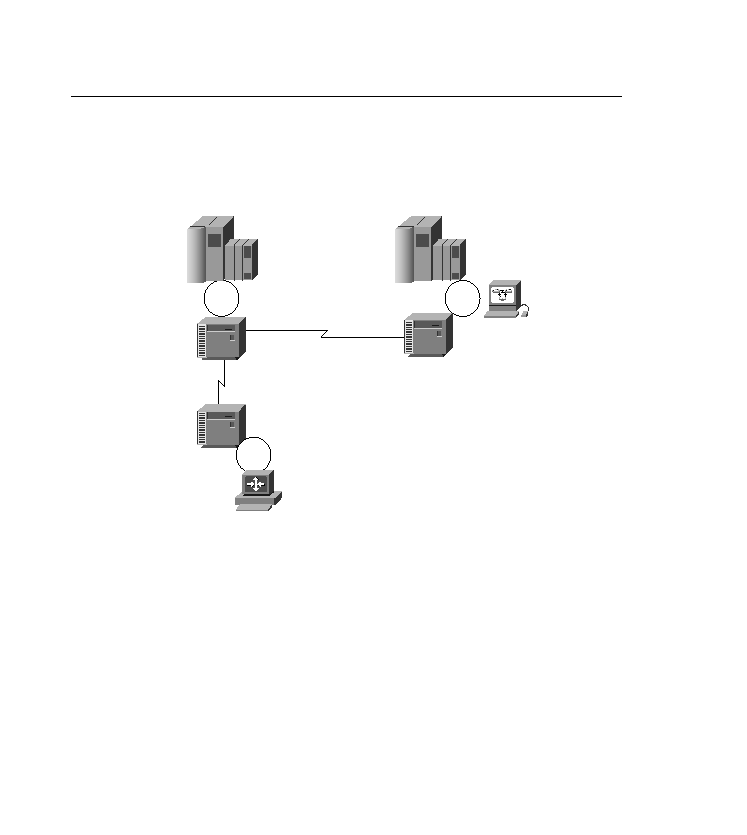
amounts of Token Ring in the SNA domains.
Cisco routers. The routers are installed throughout the network. Using the Cisco tunneling
feature DLSw+, layer 2 Token Ring LLC2 frames are encapsulated into IP datagrams back to
the data center, as shown in Figure 13-3.
received on Ring 1 from the PC and are encapsulated into IP packets. Using the Cisco DLSw+
feature, they are transported across the non-Token Ring medium to their destination, R1. As
soon as R1 receives them, it de-encapsulates the IP packets, and the LLC2 frames can now
traverse Ring 2 toward their destination. Another possibility would be SDLC frames
encapsulated into DLSw+ across the non-Token Ring medium, as shown in Figure 13-4.
transport mechanism at Layer 2, as shown in Figure 13-5. This method does not involve
DLSw+. Frame Relay provides cost savings over leased 9600-baud lines by enabling the use of
other protocols over one physical connection. Begin by putting in routers until a stable network
is in place.